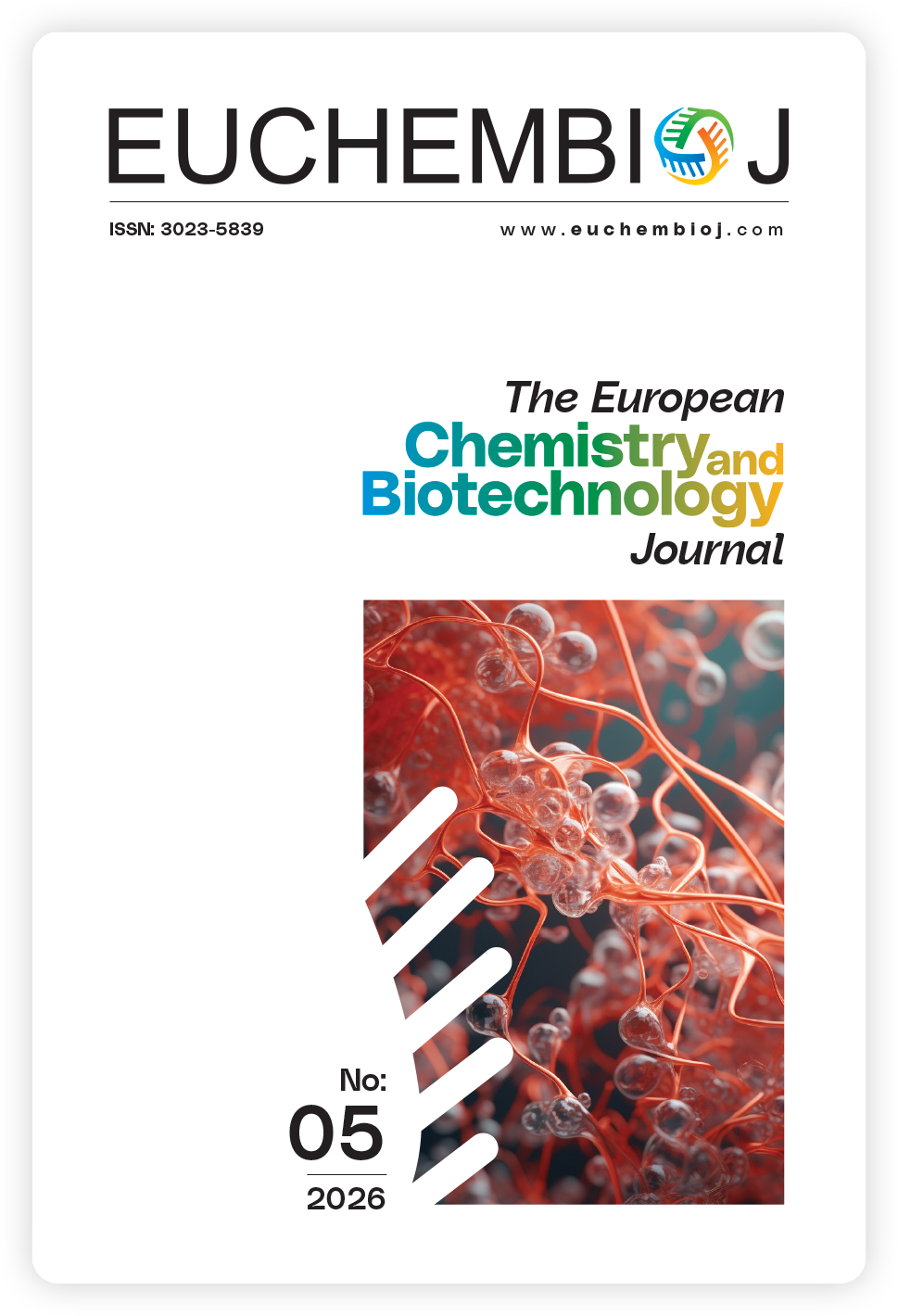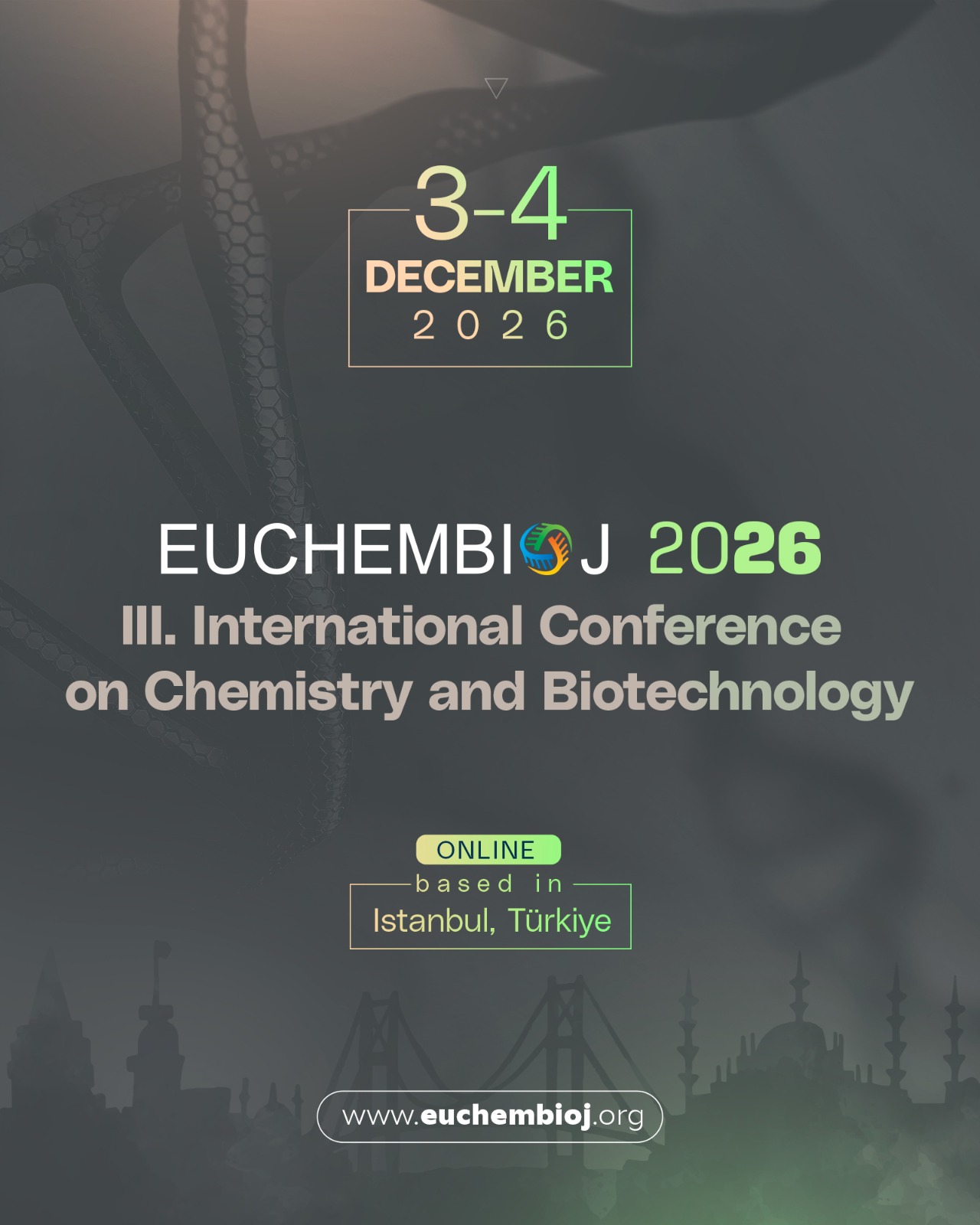GC-MS analysis of volatile compounds from pine tar using DLLME and cytotoxicity assessment
DOI:
https://doi.org/10.62063/ecb-65Keywords:
DLLME, GC–MS, Pine tarAbstract
Pine tar has long been valued for its dermatological and antimicrobial properties; however, its volatile and semi-volatile component profile remains underexplored from a sustainable bioprospecting perspective. In this study, we combined dispersive liquid–liquid microextraction (DLLME) with GC-MS to develop a rapid, green workflow for profiling pine-tar volatiles, achieving greater than or equal to 50-fold enrichment from a 100 mg sample in under 10 min. GC-MS analysis on a TRB-5MS column (90 min gradient) resolved 45 compounds (match ≥ 77 %), with sesquiterpenes accounting for 71.3 % of the total area (isolongifolene 30.3 %; isobornyl acetate 16.0 %; borneol 12.4 %; (+)-longicyclene 12.5 %). Monoterpene alcohols comprised 4.4 %, while minor oxidized derivatives contributed < 3 %.
Compared to conventional hydrodistillation, DLLME reduced chlorinated solvent usage by 90 % and enhanced recovery of high-boiling terpenoids by ~ 25 %. Furthermore, the cytotoxic effect of pine tar was investigated on human umbilical vein/vascular endothelium cells (HUVEC) using 3-[4,5-dimethylthiazol-2-yl]-5[3-carboxymethoxyphenyl]-2-[4-sulfophenyl]-2H-tetrazolium (MTS) cell viability assay, revealing a low level of toxicity. The resulting chemical fingerprint high lights the biotechnological potential of sesquiterpene scaffolds such as isolongifolene for microbial production and biocatalytic transformations. It also supports enzyme-based functionalization strategies for isobornyl acetate and borneol, and opens avenues in sustainable perfumery, pharmaceutical intermediates, and biofuel applications. This semi-quantitative and eco-friendly platform offers a practical foundation for the biotechnological valorization and green production of pine-tar terpenoids. In addition, the observed low cytotoxicity of pine tar contributes to the preliminary safety assessment of this natural product on human endothelial cells.
References
Al, S., & Sagirli, O. (2025). Application of salt-assisted liquid–liquid extraction in bioanalytical methods. Euchembioj reviews, 1(1), 70–80. https://doi.org/10.62063/rev-13 DOI: https://doi.org/10.62063/rev-13
Al, S., Kul, A., & Sagirli, O. (2024). Salt-assisted liquid–liquid microextraction for determination of haloperidol in human plasma by LC-MS/MS. The european chemistry and biotechnology journal, 1, 39–46. https://doi.org/10.62063/ecb-16 DOI: https://doi.org/10.62063/ecb-16
Alhalak, N., Sekerler, T. (2025). Phytochemical and biological activities of Eremurus spectabilis: A review. Euchembioj reviews, 1(2), Article e25008. https://doi.org/10.62063/rev-200439 DOI: https://doi.org/10.62063/rev-200439
Ali, B., Al-Wabel, N. A., Shams, S., Ahamad, A., Khan, S. A., & Anwar, F. (2015). Essential oils used in aromatherapy: A systemic review. Asian pacific journal of tropical biomedicine, 5(8), 601–611. https://doi.org/10.1016/j.apjtb.2015.05.007 DOI: https://doi.org/10.1016/j.apjtb.2015.05.007
Altiparmak-Ulbegi, G., Hasbal-Celikok, G., & Aksoy-Sagirli, P. (2025). AKT1 and CTNNB1 mutations as drivers of paclitaxel resistance in breast cancer cells. Oncology letters, 30(1), 324. https://doi.org/10.3892/ol.2025.15070 DOI: https://doi.org/10.3892/ol.2025.15070
Barnes, T. M., & Greive, K. A. (2017). Topical pine tar: History, properties and use as a treatment for common skin conditions. Australasian journal of dermatology, 58(2), 80–85. https://doi.org/10.1111/ajd.12427 DOI: https://doi.org/10.1111/ajd.12427
Dalkilic, S., Dalkilic, L. K., Celik, A., Atesshin, D. A., Mulayim, S., Kucuktufekci, M. C., & Gulacar, Ö. (2024). Evaluation of biological activity of tar extracted from Pinus brutia and Cedrus libani from Turkey. Pakistan journal of botany, 56(3), 1119–1130. http://dx.doi.org/10.30848/PJB2024-3(37) DOI: https://doi.org/10.30848/PJB2024-3(37)
Hon, K. L., Ng, W. G. G., Kung, J. S. C., Leung, P. C., & Leung, T. F. (2019). Pilot studies on two complementary bath products for atopic dermatitis children: Pine-tar and tea. Medicines, 6(1), 8. https://doi.org/10.3390/medicines6010008 DOI: https://doi.org/10.3390/medicines6010008
Leong, M.-I., Fuh, M.-R., & Huang, S.-D. (2014). Beyond dispersive liquid–liquid microextraction. Journal of chromatography A, 1335, 2–14. https://doi.org/10.1016/j.chroma.2014.02.021 DOI: https://doi.org/10.1016/j.chroma.2014.02.021
Liu, C.-L., Xue, K., Yang, Y., Liu, X., Li, Y., Lee, T.-S., Bai, Z., & Tan, T.-W. (2022). Metabolic engineering strategies for sesquiterpene production in microorganisms. Critical reviews in biotechnology, 42(1), 1–36. https://doi.org/10.1080/07388551.2021.1924112 DOI: https://doi.org/10.1080/07388551.2021.1924112
Özgen, A. (2025). Determination of phenolic constituents with LC-MS/MS and cytotoxicity evaluation of ‘tar’ from Pinus nigra Arnold (Pinaceae). Natural product research, 1–10. https://doi.org/10.1080/14786419.2025.2463118 DOI: https://doi.org/10.1080/14786419.2025.2463118
Petrovic, B., Petrovic, A., Bijelic, K., Stanisic, D., Mitrovic, S., Jakovljevic, V., Bolevich, S., Glisovic Jovanovic, I., & Bradic, J. (2024). From nature to healing: Development and evaluation of topical cream loaded with pine tar for cutaneous wound repair. Pharmaceutics, 16(7), 859. https://doi.org/10.3390/pharmaceutics16070859 DOI: https://doi.org/10.3390/pharmaceutics16070859
Rezaee, M., Assadi, Y., Milani Hosseini, M. R., Aghaee, E., Ahmadi, F., & Berijani, S. (2006). Determination of organic compounds in water using dispersive liquid–liquid microextraction. Journal of chromatography A, 1116(1–2), 1–9. https://doi.org/10.1016/j.chroma.2006.03.007 DOI: https://doi.org/10.1016/j.chroma.2006.03.007
Santos, F., & Galceran, M. (2003). Modern developments in gas chromatography–mass spectrometry-based environmental analysis. Journal of chromatography A, 1000(1–2), 125–151. https://doi.org/10.1016/S0021-9673(03)00305-4 DOI: https://doi.org/10.1016/S0021-9673(03)00305-4
Seliman, T. M. H., Ozsoy, N., Altiparmak-Ulbegi, G., Alp-Kavlo, H., Arcan, G. G., Akev, N., Can, A., & Aksoy-Sagirli, P. (2025). A new lectin from Amanita vaginata mushroom with potent anti-inflammatory activity. Natural product research, 1–9. https://doi.org/10.1080/14786419.2025.2530212 DOI: https://doi.org/10.1080/14786419.2025.2530212
Shinozaki, T., Nakagawa, M., Nakanishi, T., Ishizuka, Y., Sasaki, Y., Umeda, S., & Namegaya, Y. (2022). Biomarkers and post-depositional decomposition rates of marine and terrestrial organic materials in coastal sediments after the 2011 Tohoku-oki tsunami in northeastern Japan. Progress in earth and planetary science, 9, 63. https://doi.org/10.1186/s40645-022-00491-6 DOI: https://doi.org/10.1186/s40645-022-00491-6
Simoneit, B. R. T., Rogge, W. F., Mazurek, M. A., Standley, L. J., Hildemann, L. M., & Cass, G. R. (1993). Lignin pyrolysis products, lignans, and resin acids as specific tracers of plant classes in emissions from biomass combustion. Environmental science & technology, 27(12), 2533–2541. https://doi.org/10.1021/es00048a034 DOI: https://doi.org/10.1021/es00048a034
Stashenko, E., & Martínez, J. R. (2014). Gas chromatography-mass spectrometry. In advances in gas chromatography (pp. 1–38). https://dx.doi.org/10.5772/57492 DOI: https://doi.org/10.5772/57492
Zgoła-Grześkowiak, A., & Grześkowiak, T. (2011). Dispersive liquid-liquid microextraction. TrAC Trends in analytical chemistry, 30(9), 1382–1399. https://doi.org/10.1016/j.trac.2011.04.014 DOI: https://doi.org/10.1016/j.trac.2011.04.014
Published
How to Cite
Issue
Section
License

This work is licensed under a Creative Commons Attribution-NonCommercial 4.0 International License.








